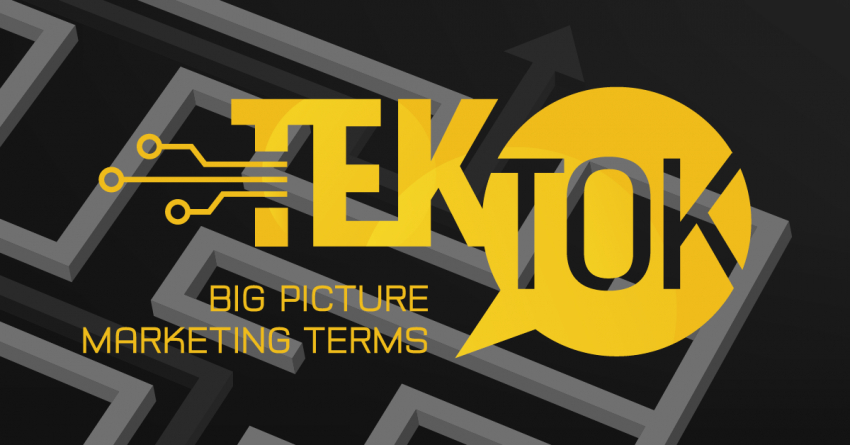10+ Big Picture Marketing Terms
We can get caught up in the nitty gritty from time to time—there are so many marketing elements to consider. All in all, though, it's the big picture that matters, and the big picture words reflect that. Refamiliarize yourself with these big picture words and remember to periodically focus on the forest, not just the trees.
1. Digital marketing uses communication on any form of digital device to persuade people to purchase a product or service.
2. Brand positioning differentiates your firm from your competitors. Comprised of the key qualities and values that are synonymous with your company, it helps consumers identify and connect with your brand. Brand positioning can be conveyed through a variety of means including tone and voice, visual design, and the way your company represents itself in person and on social media.
3. Brand awareness is the extent to which people can recall and recognize your brand. Brand awareness constitutes a scenario when customers can see your brand or service and know that you provide the best solution to their problem.
4. Demand generation uses data-driven marketing programs to produce awareness and interest in a company's offerings through the use of technology.
5. Inbound marketing focuses on drawing customers in as opposed to blasting your message to anyone and everyone. Through tactics like blogging, social media and SEO, inbound marketing attracts customers to your company using helpful, relevant content.
6. Lead nurturing educates and builds trust with your prospects to guide them through the buyer’s journey. The goal of lead nurturing is to provide your prospects with a unique experience that keeps them coming back for more—and eventually converts them into customers.
7. Buyer persona creates a semi-fictional representation of your ideal customers. Buyer personas should include demographic, psychographic, and behavioral information. They tend to go more in-depth about the role and influence these people have within their companies, emphasizing their goals and motivations.
8. Ideal customer profile (ICP) defines a hypothetical type of company that would reap the most benefit from your services. Selling to ICPs tends to be the quickest and most successful. They also have the greatest customer retention rates and the highest number of evangelists for your brand.
9. Sales enablement combines coaching, tools, and content to help your business development team be more efficient and effective.
10. Account-based marketing (ABM) flips traditional marketing on its head. Rather than developing buyer personas and then casting a wide net to attract those personas to your brand, ABM is all about sending tailored messages to targeted accounts. ABM focuses on finding ways to engage with people from targeted accounts based on your ideal customer profile (ICP). Marketing fuels the strategies behind a successful ABM approach, while business development provides insight regarding the impact of those interactions.
11. Contextual marketing is guided by the behaviors and conditions surrounding your marketing efforts, so all content is relevant to the person receiving it.
12. Word-of-mouth marketing (WOM) is the oral or written advocacy of a good or service from a satisfied customer (or evangelist) to a prospective customer. It’s widely considered to be the most effective form of promotion.
13. Conversational marketing builds relationships and creates authentic experiences with customers and buyers. Use real-time conversations to move buyers through your marketing and BD funnels.






